干货满满|A-level微积分之函数凹凸性
2020-03-17 环球教育
A-level 微积分之函数凹凸性
Concavity
凹凸性
Let f be differentiable on an open interval I. If f' is increasing on I, then f is concave up on I. If f' is decreasing on I, then f is concave down on I.
函数在区间 I上处处可导,如果一阶导数增大,则函数为上凹的(concave up),如果一阶导数减小,则函数是是上凸的(concave down)。
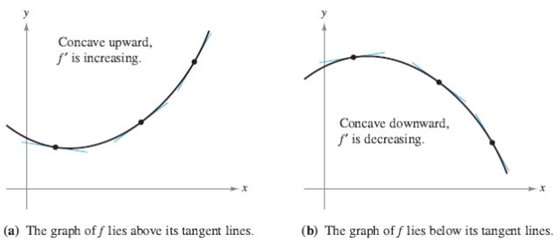
The Second derivative and Concavity
Suppose that f'' exists on an open interval I.
• If f'' >0 on I, then f is concave up on I.
• If f'' < 0 on I, then f is concave down on I.
• If c is a point of I at which f'' changes sign at c (from positive to negative, or vice versa), then f has an inflection point at c.
二阶导数与凹凸性
假定在给定区间内二阶导处处存在,
• 如果在区间内 f'' > 0 on I,则函数图像向上凹(cancave up);
• 如果在区间内 f'' < 0 on I,则函数图像向上凸(cancave down);
如果二阶导数在C点改变符号,由正变负,或者由负变正,则C点为函数的拐点。
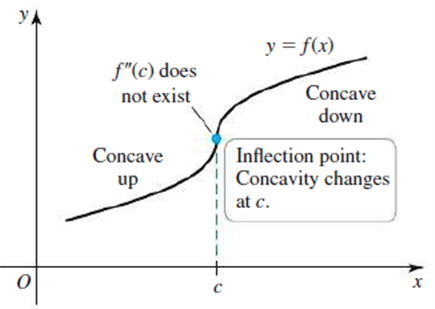

备注 ( 求inflection point在AS阶段不作要求 )
Second Derivative Test
二阶导数测试
We need to use the second derivative to identify local maxima and minima.
同学们需要掌握用二阶导数测试来确定函数的相对极值。
Second Derivative Test for Local Extrema
Suppose that f'' is continuous on an open interval containing c with f' ( c)=0.
• If f'' > 0, then f has a local minimum at c .
• If f'' < 0, then f has a local maximum at c .
• If f'' = 0, then the test is inconclusive; f may have a local maximum, local minimum, or neither at c.
假设函数的二阶导数在指定区间内连续,且点C处一阶导数为零,
如果 f'' > 0, 则函数在C处有相对最小值;
如果 f'' < 0, 则函数在C处有相对最大值;
如果 f'' = 0, 则测试结果不确定,函数在点C可能会是相对最大值,相对最小值,或者既不是相对最大值也不是最小值。
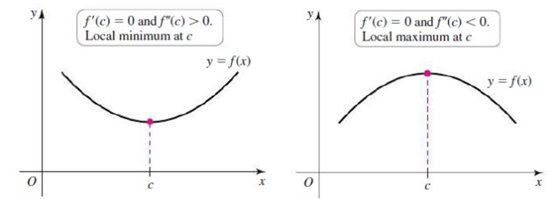
注意:二阶导数测试与一阶导数测试的第一步一样,都是找出一阶导数为零或不存在的关键点,再用不同的方法确定关键点的性质。A-Level试卷中不会明确要求使用哪种方法,需要同学们自己决定。
常考题型讲解:
Example 1


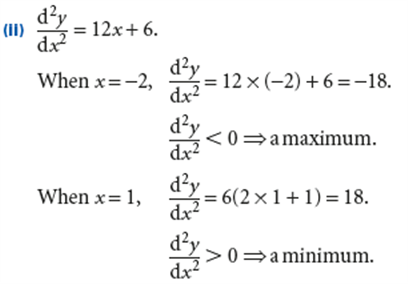
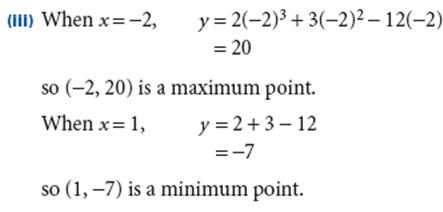
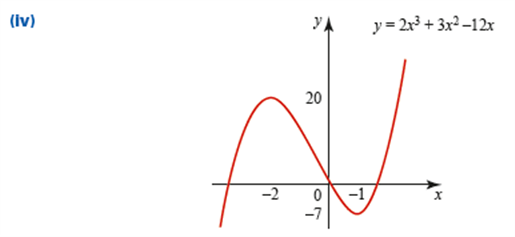
一阶导数测试与二阶导数测试的选择
一阶导数测试与二阶导数测试的目的是一样的,确定函数的相对极值性质,是最大值还是最小值。在A-Level考试中,使用一阶导数测试还是二级导数测试,取决于斜率为零的关键点的个数与函数二次求导的复杂程度。如果一阶导数为零的点较多,大于等于三个,建议使用二阶导数测试,如果阶导数为零的点只有一个或两个,且二阶导数求导复杂,可使用一阶导数测试。
小伙伴们看过之后对自己的学习有没有帮助呀?如果有帮助的话记得关注我们http://beijing.gedu.org/,我们会经常更新关于A-level的相关知识,祝小伙伴们都拿到A*!!!


1 环球教育培训学校2025寒假雅思课程全面升级,助力突破语言瓶颈
2 环球教育三维动态教学体系精准应对雅思改革,2025寒假班助力考生冲刺高分
3 环球教育雅思培训:三维动态教学体系引领留学备考新风尚
4 环球教育多维创新引领语言培训,28年深耕构建国际教育生态圈
5 环球教育培训机构 2025 年度成果发布,全品类服务覆盖学子成长全周期
6 环球教育雅思班全新升级,三维动态教学体系精准应对机考改革
7 环球学校雅思培训:三维动态教学体系助力学子精准提分
8 雅思6分相当于英语几级?国内英语等级对照全解析
9 环球教育雅思培训再添高分案例,28 年深耕铸就提分标杆
10 环球教育培训学校:以多元课程与匠心服务,点亮学子成长之路
北京市海淀区环球雅思培训学校 版权所有 课程咨询热线:400-616-8800
Copyright 1997 – 2025 gedu.org. All Rights Reserved 京ICP备10036718号
全部课程、服务及教材面向18岁以上人群
市场合作申请